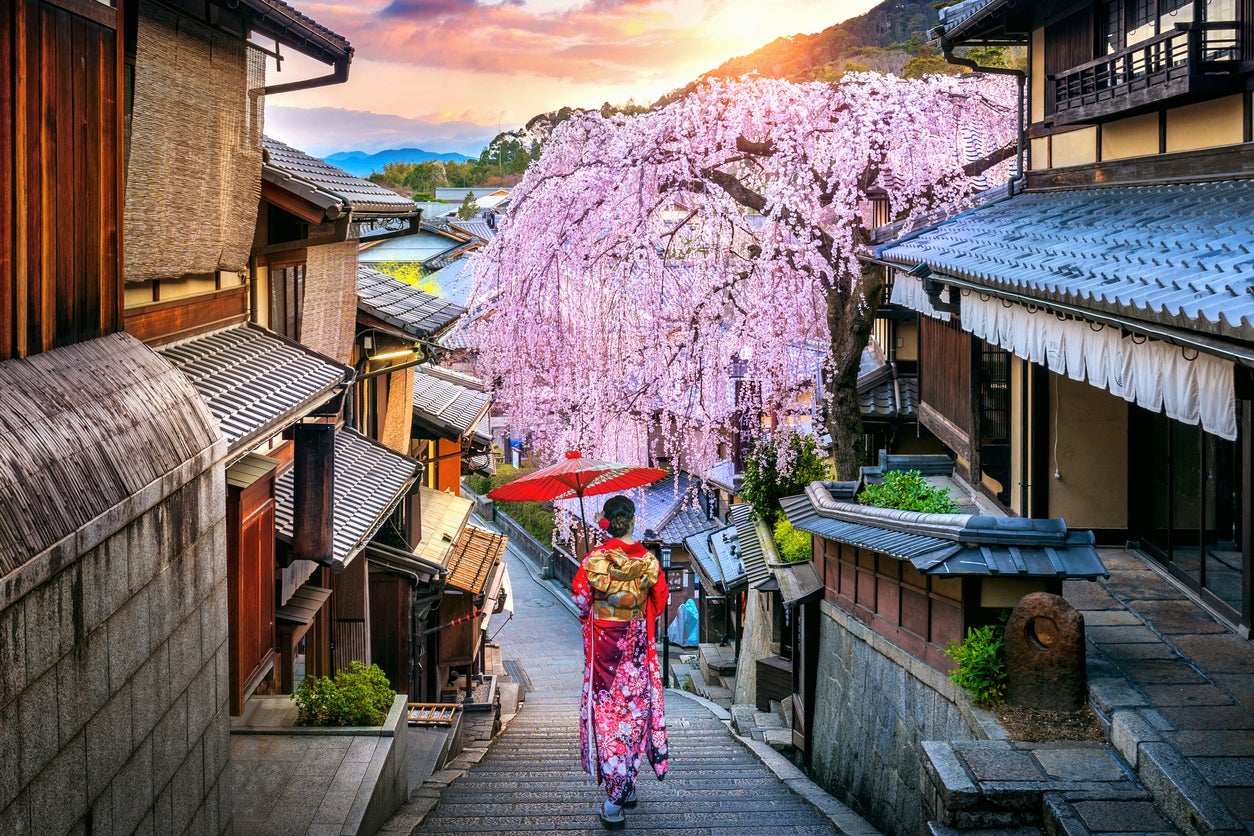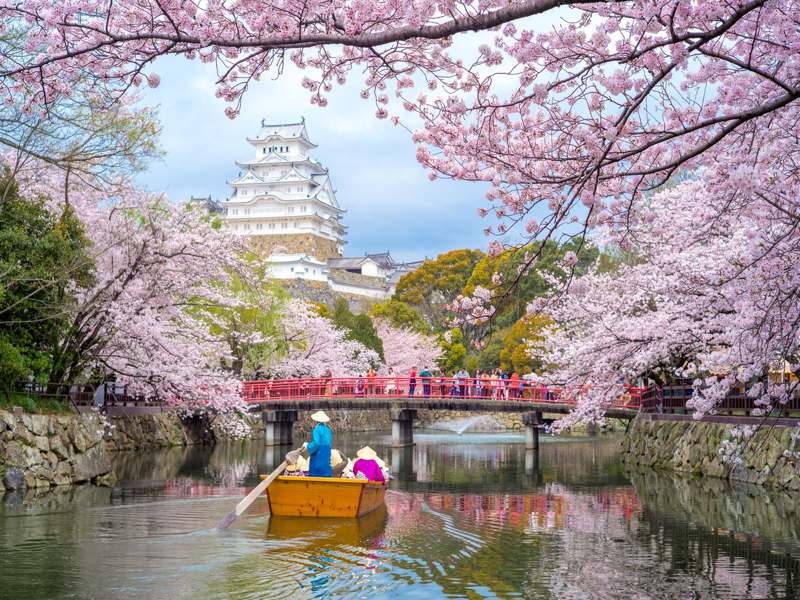Travel Japan: A Comprehensive Guide to Exploring the Land of the Rising Sun
Japan is an enchanting country that seamlessly blends modernity with ancient traditions. From the bustling streets of Tokyo to the tranquil temples of Kyoto, Japan offers something for every traveler. In this guide, we’ll take you on a journey through Japan’s best destinations, providing detailed insights, tips, and recommendations to make your trip unforgettable.

Why Travel to Japan?
Japan is a country that invites travelers to explore its diverse culture, rich history, and natural beauty. The country offers everything from high-tech urban experiences to serene landscapes and historic landmarks. Here are a few reasons why you should consider traveling to Japan:
- Rich Culture & History: With over 1,000 years of history, Japan is home to some of the world’s most unique cultural practices and stunning historical sites.
- Natural Beauty: From the majestic Mount Fuji to the serene beauty of cherry blossoms, Japan’s nature is awe-inspiring.
- Cuisine: Japan’s culinary delights are renowned globally. Sushi, ramen, and tempura are just the beginning of your gastronomic adventure.
- Safety: Japan is one of the safest countries to visit, with low crime rates and friendly locals.
Best Time to Visit Japan
Japan is a year-round destination, with each season offering a unique experience. Here’s a breakdown of the best times to visit:
Spring (March – May)
Spring is one of the most popular times to visit Japan due to the beautiful cherry blossoms (sakura) in full bloom. Cities like Tokyo and Kyoto turn into picturesque landscapes with pink and white flowers adorning the streets. It’s also the perfect time to enjoy mild weather and attend local festivals like Hanami (flower viewing).

Summer (June – August)
Summer in Japan can be hot and humid, but it’s also the season for festivals (matsuri), fireworks displays, and outdoor activities. If you don’t mind the heat, this is a great time to experience the energy of Japan’s festivals, like the Gion Matsuri in Kyoto or the Awa Odori in Tokushima.
Autumn (September – November)
Autumn brings vibrant foliage across Japan. The iconic red and gold leaves, especially in places like Kyoto and Nikko, make this an ideal time for sightseeing. The weather is cool and pleasant, making it a great time for hiking and outdoor activities.
Winter (December – February)
If you enjoy winter sports, Japan is the place to be! The northern regions of Hokkaido are famous for their snow, offering world-class skiing and snowboarding. Additionally, Japan’s hot springs (onsen) provide a perfect way to relax after a day of outdoor fun.
Top Destinations in Japan
Tokyo: The Modern Metropolis
Tokyo, Japan’s capital, is a vibrant city where tradition and innovation collide. From neon-lit skyscrapers to ancient shrines, Tokyo has something for everyone.
Key Attractions:
- Shibuya Crossing: One of the busiest intersections in the world, famous for its massive pedestrian traffic.
- Meiji Shrine: A tranquil Shinto shrine located in a forested area in the heart of the city.
- Tokyo Skytree: The world’s tallest tower, offering breathtaking views of the city.

Kyoto: The Cultural Capital
Kyoto, once the capital of Japan, is home to some of the country’s most iconic temples and gardens. If you want to experience traditional Japan, this is the place to be.
Key Attractions:
- Fushimi Inari Shrine: Known for its thousands of red torii gates, this shrine is a must-visit.
- Kinkaku-ji (Golden Pavilion): A Zen Buddhist temple covered in gold leaf, it’s one of Japan’s most famous landmarks.
- Arashiyama Bamboo Grove: A serene and surreal bamboo forest that offers a peaceful escape from the city.
Osaka: The Food Capital
Osaka is often referred to as the food capital of Japan, and for good reason. The city offers a mix of modern attractions and historical sites, but it’s the cuisine that really steals the show.
Key Attractions:
- Dotonbori: A famous entertainment district known for its neon lights and street food.
- Osaka Castle: A historic landmark that offers insights into Japan’s samurai era.
- Universal Studios Japan: A popular theme park for families and thrill-seekers.
Hokkaido: A Nature Lover’s Paradise
Hokkaido, Japan’s northernmost island, is known for its stunning natural beauty, including hot springs, lakes, and mountains. It’s the perfect destination for those who love the outdoors.
Key Attractions:
- Niseko: A world-famous ski resort offering incredible powder snow.
- Lake Toya: A picturesque caldera lake surrounded by mountains, ideal for hiking and relaxing.
- Sapporo: The capital city of Hokkaido, known for its beer, winter sports, and annual snow festival.
Travel Tips for Visiting Japan
- Language: While many Japanese people speak some English, learning a few basic phrases in Japanese will enhance your experience. Simple greetings like “Konnichiwa” (Hello) and “Arigatou” (Thank you) go a long way.
- Transportation: Japan has an efficient and punctual public transport system. Consider purchasing a Japan Rail Pass for unlimited travel on JR trains, including the Shinkansen (bullet trains).
- Cash vs. Card: While credit cards are accepted in many places, it’s advisable to carry cash, especially in smaller towns. Japan is a cash-oriented society.
- Etiquette: Japanese culture places a high value on politeness. Be sure to bow when greeting someone and avoid speaking loudly in public spaces.
Cuisine to Try in Japan
No trip to Japan is complete without indulging in the local cuisine. Here are some dishes you must try:
- Sushi: Japan’s most famous dish, consisting of vinegared rice topped with raw or cooked fish and vegetables.
- Ramen: A hearty noodle soup served with a variety of toppings, such as pork, egg, and vegetables.
- Tempura: Seafood or vegetables battered and deep-fried to crispy perfection.
- Kaiseki: A traditional multi-course meal that highlights seasonal ingredients.
FAQs About Traveling to Japan
1. Is Japan expensive to visit?
Japan can be expensive, especially in major cities like Tokyo and Kyoto. However, with careful planning, it’s possible to travel on a budget. Consider staying in hostels, eating at local restaurants, and using public transportation.
2. Do I need a visa to travel to Japan?
Visa requirements depend on your nationality. Many countries have a visa exemption agreement with Japan, allowing stays of up to 90 days without a visa. Be sure to check the specific requirements for your country.
3. Is it safe to travel to Japan?
Yes, Japan is considered one of the safest countries for travelers. The crime rate is low, and the public transportation system is reliable and secure.
4. Can I use English in Japan?
While English is widely taught in schools, it is not commonly spoken in daily life. It’s helpful to learn a few basic Japanese phrases, especially when traveling outside major cities.
Conclusion
Japan is a country that offers a little bit of everything for every type of traveler. Whether you’re interested in exploring bustling cities, soaking in the natural beauty, or experiencing traditional culture, Japan won’t disappoint. Plan your trip, embrace the local customs, and immerse yourself in everything this fascinating country has to offer!
For more detailed information on destinations, local customs, and tips for traveling in Japan, visit the Japan National Tourism Organization.
